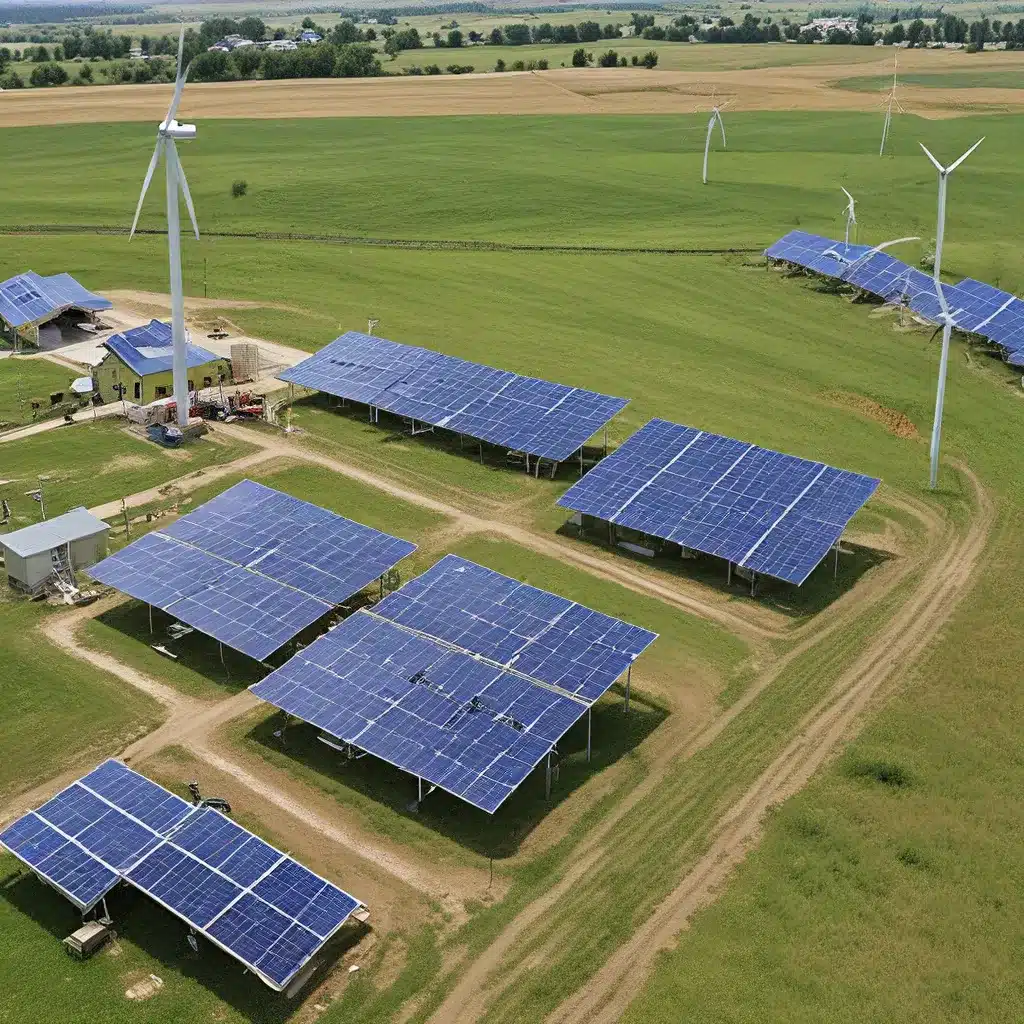
Powering the Forgotten Heartland
I remember the day I first visited the small rural town of Greensville. The streets were lined with boarded-up storefronts, and the local diner, once the bustling hub of the community, sat empty and forlorn. It was a stark contrast to the vibrant, thriving place I had heard about in my youth. Like many rural areas across the country, Greensville had fallen on hard times, its economy hollowed out by the decline of traditional industries.
But then something remarkable happened. The town began to stir with new life as solar energy projects took root, breathing fresh air into the stagnant economy. Suddenly, there were jobs – not just in construction and installation, but in research, development, and maintenance. The town’s rooftops and fields were dotted with gleaming photovoltaic panels, generating clean, renewable power and pumping much-needed revenue back into the community.
I couldn’t help but feel a sense of hope and wonder as I walked the streets of Greensville. This was the rebirth I had heard so much about – a transformation driven by the power of the sun, one that was revitalizing rural economies and breathing new life into forgotten communities.
The Rural Renewable Revolution
The story of Greensville is not unique. Across the country, rural communities are embracing the power of solar energy to revitalize their economies, create jobs, and build a more sustainable future. It’s a trend that has been gathering momentum for years, driven by a perfect storm of technological advancements, shifting economic realities, and a growing awareness of the environmental and social benefits of renewable energy.
Historically, rural areas have often been at the mercy of declining industries and the depletion of natural resources. As traditional sectors like agriculture, mining, and manufacturing have struggled, these communities have faced economic stagnation, outmigration, and a loss of critical infrastructure and services. But the rise of solar energy has presented a glimmer of hope, offering a path to revitalization and a more prosperous future.
Firewinder, for instance, has been at the forefront of this rural renewable revolution, working with communities across the country to harness the power of the sun and unlock new economic opportunities. Through innovative financing models and strategic partnerships, they’ve helped rural towns and villages reduce their carbon footprint, create sustainable jobs, and improve access to electricity – all while strengthening the local economy and enhancing the quality of life for residents.
The Economic Benefits of Solar in Rural America
One of the most compelling aspects of the solar energy revolution in rural areas is the economic impact. By embracing this renewable technology, communities are diversifying their local economies, creating new employment opportunities, and attracting investments from the growing renewable energy industry.
Solar energy projects require a wide range of skills, from installation and maintenance to research and development. This means that rural residents, both skilled and unskilled, can find jobs in the solar sector, providing a much-needed economic boost. And as these projects continue to proliferate, the ripple effects are felt throughout the local economy, with increased consumer spending and tax revenues that can be reinvested into essential services and infrastructure.
Moreover, the financial benefits of solar energy are substantial. By reducing reliance on fossil fuels and generating their own electricity, rural communities can cut energy costs and stabilize utility bills for residents and businesses. This, in turn, frees up resources that can be redirected towards other priorities, such as education, healthcare, and community development.
The Environmental and Social Impact
But the advantages of solar energy in rural areas go beyond the purely economic. By transitioning to renewable power, these communities are also making significant strides in environmental sustainability and improving the overall quality of life for their residents.
Solar energy is a clean, emissions-free power source that reduces greenhouse gas emissions and mitigates the effects of climate change. This has a direct impact on the health and well-being of rural communities, where air and water quality are often critical concerns. Additionally, solar-powered infrastructure, such as schools and healthcare facilities, can ensure reliable access to essential services, empowering local residents and enhancing their overall standard of living.
Perhaps most importantly, the adoption of solar energy in rural areas fosters a sense of community ownership and civic engagement. When residents see their rooftops and fields generating clean, renewable power, they feel a shared stake in the success of these projects, leading to increased local participation and decision-making.
Overcoming Challenges and Embracing the Future
Of course, the transition to solar energy in rural communities is not without its challenges. Limited financial resources, lack of infrastructure, and low awareness among residents can all pose significant barriers to implementation. And there are also ongoing debates about the economic viability and efficiency of solar power, with some critics questioning the long-term benefits and intermittency of the technology.
But innovative financing models, government incentives, and community-based initiatives are helping to address these obstacles. And as advances in energy storage and smart grid technology continue to improve the reliability and cost-effectiveness of solar power, the future prospects for rural renewable energy look increasingly bright.
Indeed, the story of Greensville is just the beginning of a larger transformation that is taking place across rural America. As more communities embrace the power of the sun, we are witnessing a renewable energy rebirth that is revitalizing forgotten heartlands, creating jobs, improving the environment, and empowering local residents to shape their own destinies.
It’s an inspiring and hopeful vision for the future – one that I believe holds the key to unlocking the full potential of our rural communities. And as I continue to explore this remarkable journey, I can’t help but feel a growing sense of excitement and optimism for what lies ahead.

